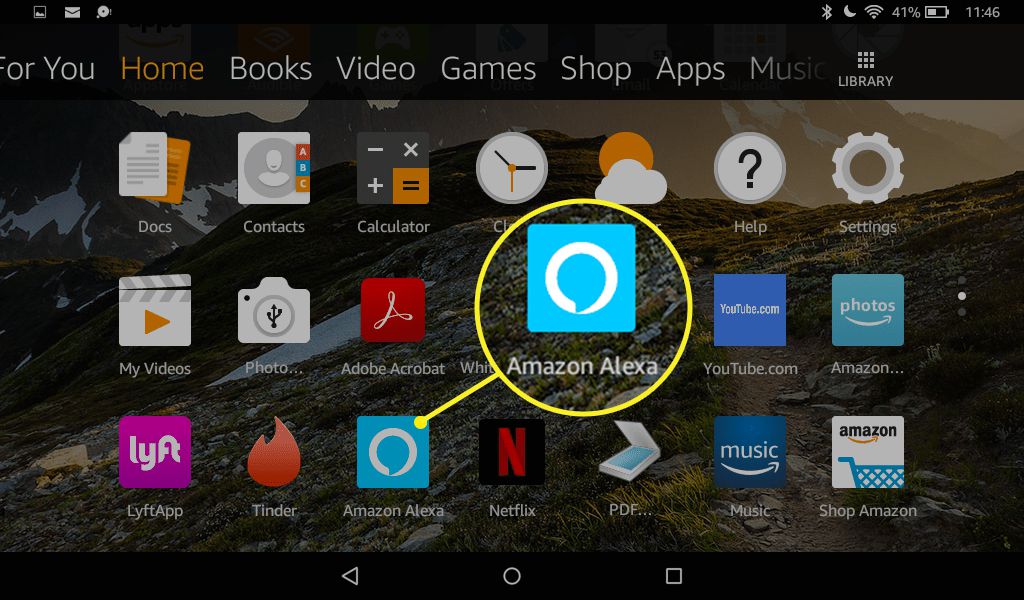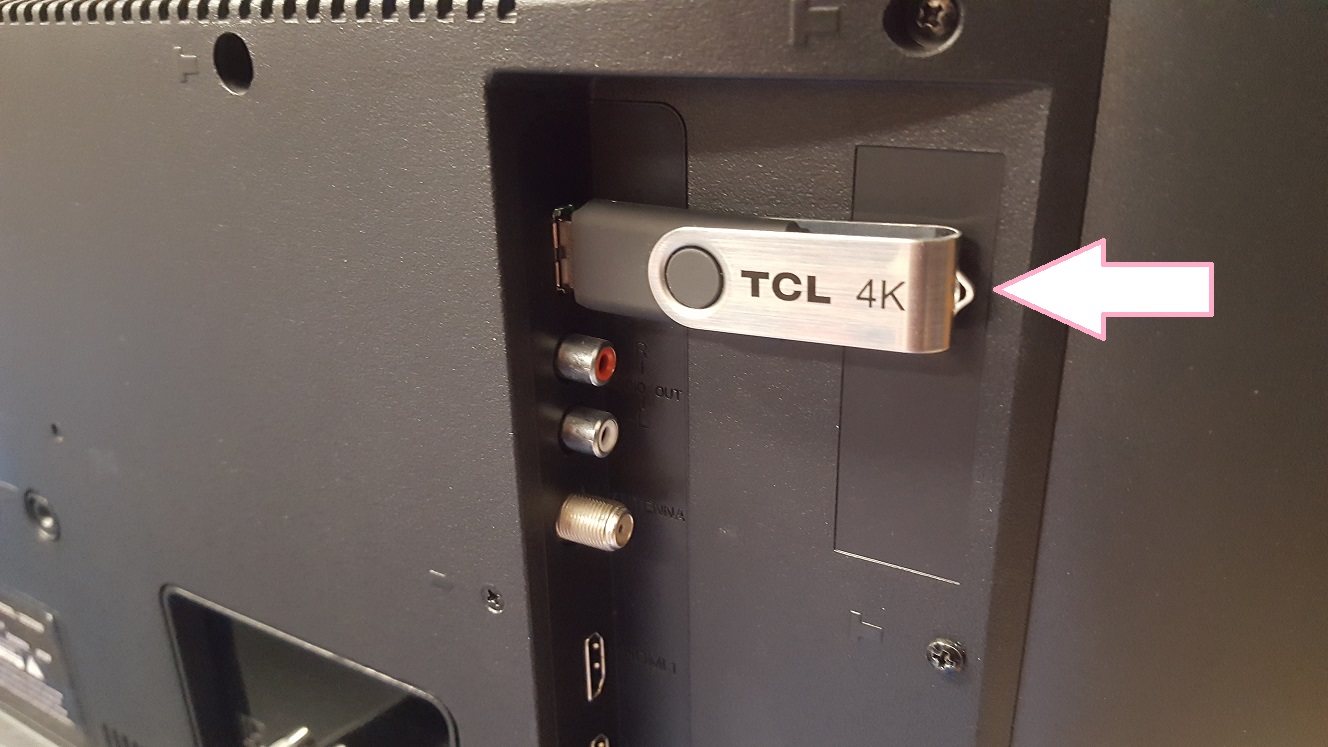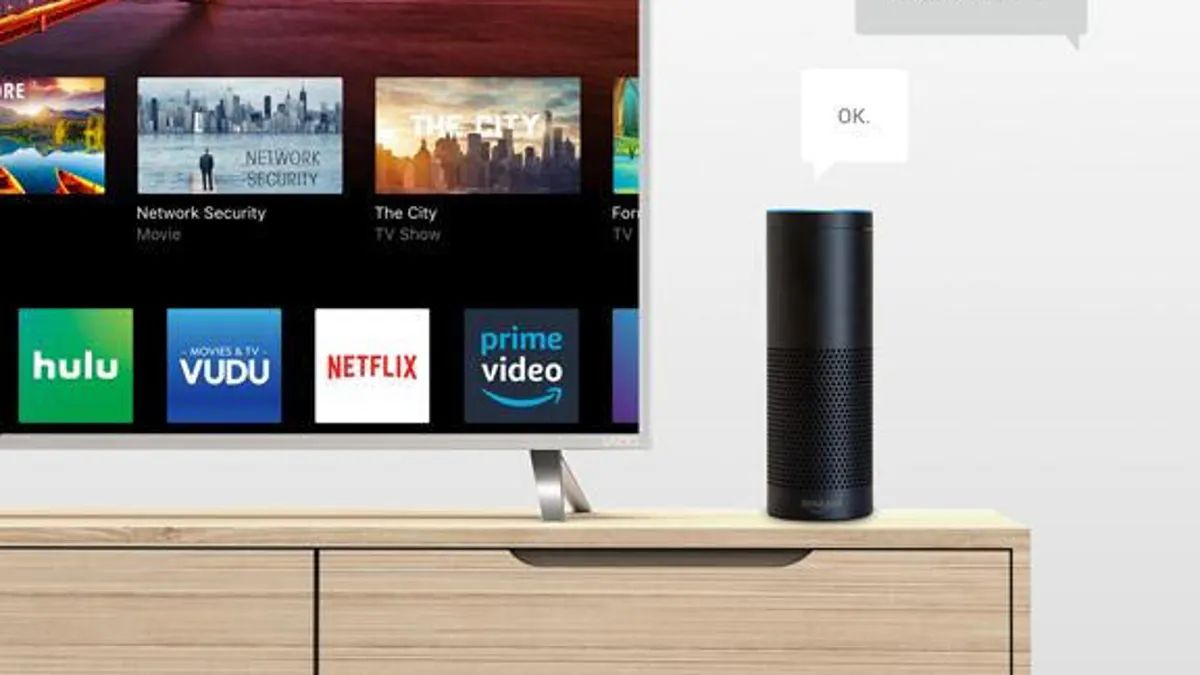Introduction
A smart TV, also known as a connected TV or hybrid TV, is a television set that is equipped with internet connectivity and built-in software. This allows users to access a wide range of online content and services, stream movies and TV shows, browse the web, and even play video games directly on their TV screen. In today’s digital age, smart TVs have become increasingly popular as they offer a convenient and streamlined way to access and enjoy multimedia content.
With the rapid advancements in technology, many traditional TVs are being replaced by smart TVs. However, not all TVs are created equal, and it’s important to know whether or not your TV is a smart TV before making a purchase or seeking to upgrade your existing TV. In this article, we will explore the key indicators that can help you determine if your TV is indeed a smart TV.
It is important to note that a smart TV is not just any TV that is connected to the internet. It is a TV that has specific features and functionalities designed to enhance your entertainment experience. So, let’s dive into the criteria you can use to identify whether or not your TV is a smart TV.
What is a Smart TV?
A smart TV is a type of television that integrates internet connectivity and interactive features to provide a more immersive and versatile entertainment experience. Unlike traditional TVs, which can only receive broadcast signals, smart TVs have built-in software and hardware that allow users to access various online services, stream content from popular platforms, and interact with a wide range of digital media.
One of the defining features of a smart TV is its ability to connect to the internet. This opens up a world of possibilities for users, as they can browse the web, check emails, and even engage in social media activities directly on their TV screen. This connectivity also enables streaming services, such as Netflix, Hulu, and Amazon Prime Video, to be accessed with ease, providing a vast library of movies, TV shows, and documentaries at the viewer’s fingertips.
Furthermore, smart TVs come equipped with various apps and services that cater to different interests and preferences. These can include music streaming platforms like Spotify and Pandora, gaming platforms such as Steam or PlayStation Now, and even fitness apps that offer workout routines and yoga classes.
In addition to the plethora of digital content available, smart TVs often come with advanced features like voice control, allowing users to operate their TV using voice commands. This hands-free functionality enhances convenience and accessibility, especially for users with mobility impairments or those who prefer a more interactive experience.
Another standout feature of smart TVs is their screen mirroring capability. This allows users to mirror or cast content from their smartphones, tablets, or laptops directly onto the TV screen. Whether it’s sharing photos, videos, or presentations, this feature enables seamless collaboration and sharing among multiple devices.
Overall, smart TVs offer a comprehensive and interconnected media experience that goes beyond traditional TV viewing. With their internet connectivity, built-in apps, advanced features, and screen mirroring capabilities, they provide a gateway to a vast digital world right from the comfort of your living room.
Checking the TV Specifications
When determining whether or not your TV is a smart TV, one of the first things you should do is check the TV specifications. This information can usually be found in the user manual or on the manufacturer’s website. Here are some key specifications to look out for:
- Operating System: Smart TVs are powered by specific operating systems, such as Android TV, webOS, Tizen, or Roku TV. Make sure to check if your TV mentions any of these operating systems in its specifications.
- Processor: Smart TVs often have a dedicated processor to handle the multimedia and internet functions. Look for information about the processor and its speed to get an idea of the TV’s performance capabilities.
- Memory and Storage: Smart TVs require sufficient memory and storage to support the installed apps and processes. Check for information on the TV’s RAM and internal storage capacity.
- Connectivity: Smart TVs need to have built-in Wi-Fi for connecting to the internet wirelessly. Additionally, they may have Ethernet ports for a wired internet connection. Ensure that your TV supports these connectivity options.
- HDMI and USB Ports: Smart TVs should have multiple HDMI ports to connect external devices such as gaming consoles, Blu-ray players, or set-top boxes. Having multiple USB ports also allows for easy connection of external storage devices.
Keep in mind that these specifications alone are not enough to determine if your TV is a smart TV. However, they can give you valuable insights into the capabilities and functionalities of the TV.
It’s worth noting that some older TV models may require an external device, such as a streaming media player or a set-top box, to access smart features. If your TV lacks built-in smart capabilities, you can still enjoy the benefits of a smart TV by connecting one of these devices.
Ultimately, checking the TV specifications is a crucial step in identifying whether your TV is a smart TV or not. It will provide you with a solid foundation of knowledge about the TV’s hardware and features, giving you a better understanding of its capabilities in terms of accessing online content and services.
Look for the Smart TV Logo
One of the easiest and most straightforward ways to determine if your TV is a smart TV is by looking for the smart TV logo. Most manufacturers prominently display a smart TV logo on the packaging or directly on the TV itself. This logo typically indicates that the TV is equipped with built-in smart capabilities.
The smart TV logo can vary depending on the manufacturer, but it is often a recognizable symbol or wordmark that represents smart functionality. Look for logos that incorporate words like “Smart TV,” “Smart Hub,” “SmartCast,” or “Android TV.” These logos act as a seal of approval, confirming that the TV is designed to provide access to online content, streaming services, and interactive features.
It’s important to note that not all TVs labeled as “smart” may have the same level of functionality. Some may offer a basic set of smart features, while others may have more advanced capabilities and a wider range of compatible apps and services. Therefore, it’s helpful to do some research on the specific smart features offered by the TV model you are interested in.
If you cannot find a smart TV logo on your TV or its packaging, it’s possible that your TV may not have built-in smart capabilities. In this case, you may need to explore alternative options, such as external streaming devices, to access online content and services.
Remember, the presence of the smart TV logo is a reliable indicator that your TV is equipped with smart features. However, it’s still important to consider other factors, such as connectivity options, apps and streaming services, and additional features, to get a complete understanding of the TV’s capabilities as a smart TV.
Connectivity Options
When determining if your TV is a smart TV, it’s essential to consider the available connectivity options. Smart TVs rely on internet connectivity to access online content, streaming services, and other digital features. Here are some key connectivity options to look for:
- Wi-Fi: Smart TVs should have built-in Wi-Fi capabilities, allowing them to connect to your home network wirelessly. This enables seamless access to online content without the need for any additional cables or connections.
- Ethernet Port: In addition to Wi-Fi, smart TVs may also have an Ethernet port. This allows for a wired internet connection, which can be more reliable and faster than a wireless connection, especially if your Wi-Fi network has weak signals.
- Bluetooth: Some smart TVs have Bluetooth functionality, which allows you to connect wireless devices like keyboards, headphones, and speakers. This enables a more convenient and versatile audio and input experience.
- HDMI Ports: HDMI ports are essential for connecting external devices such as streaming devices, gaming consoles, and Blu-ray players to your smart TV. Make sure that your TV has an adequate number of HDMI ports to accommodate your devices.
- USB Ports: USB ports provide the ability to connect USB storage devices, like external hard drives or flash drives, to your smart TV. This allows you to play media files directly from the USB device and expand your TV’s storage capacity.
Having a range of connectivity options is crucial for maximizing the functionality of your smart TV. It provides flexibility in terms of accessing and integrating various devices and peripherals seamlessly.
Before purchasing a smart TV, it’s important to assess your specific connectivity needs. Consider the devices you plan to connect, the distance between your TV and your router or modem, and any potential limitations or constraints in your home network setup. This will help ensure that your smart TV is compatible with your existing devices and that you can enjoy a smooth and uninterrupted online experience.
By taking into account the connectivity options offered by your TV, you can determine if it has the necessary capabilities to function as a smart TV and provide the seamless online connectivity and integration you desire.
Built-in Apps and Streaming Services
One of the key features of a smart TV is its ability to provide access to a wide range of built-in apps and streaming services. These apps allow you to enjoy your favorite movies, TV shows, music, and other digital content directly on your TV screen. When determining if your TV is a smart TV, it’s important to consider the available built-in apps and streaming services.
Most smart TVs come with a selection of pre-installed apps that cover popular streaming platforms such as Netflix, Hulu, Amazon Prime Video, and YouTube. These apps provide a vast library of content to choose from, including movies, TV shows, original series, documentaries, and more. Additionally, some smart TVs offer access to other popular streaming services like Disney+, HBO Max, and Spotify.
Furthermore, smart TVs may also feature apps for news, sports, weather, social media, and gaming. These apps allow you to stay updated on the latest news, follow your favorite sports teams, check the weather forecast, and even play games directly on your TV. Some smart TVs even provide the ability to download and install additional apps from an app store, expanding the range of available content and services.
When assessing the built-in apps and streaming services on your TV, it’s important to consider both the quantity and quality of the available options. Check if the apps you use frequently are supported and if the streaming services you subscribe to are available. This will ensure that your smart TV can provide the entertainment and content you desire without the need for additional devices or subscriptions.
It’s worth noting that the availability of built-in apps and streaming services may vary depending on the brand, model, and country. Therefore, it’s advisable to do some research or consult the manufacturer’s website to get a comprehensive list of the supported apps and services for your specific TV model.
By evaluating the range of built-in apps and streaming services provided by your TV, you can determine if it has the necessary offerings to fulfill your entertainment needs and provide a seamless streaming experience.
Voice Control Features
One of the advanced features offered by many smart TVs is voice control. Voice control allows users to operate their TV using spoken commands, providing a convenient and hands-free way to navigate through menus, search for content, adjust settings, and perform various functions. When determining if your TV is a smart TV, it’s important to consider the availability and functionality of voice control features.
Smart TVs equipped with voice control capabilities often come with a built-in microphone on the remote control or even on the TV itself. This allows users to simply speak their commands, eliminating the need to manually navigate through menus or use on-screen keyboards. Some smart TVs also support virtual assistants like Amazon Alexa or Google Assistant, which further enhance the voice control experience and provide access to a broader range of functionalities.
Voice control offers a range of benefits and conveniences. It allows for quick and effortless access to content by utilizing voice commands such as “Play The Office on Netflix” or “Open YouTube.” Users can also adjust settings like volume, picture mode, or input source by simply speaking the corresponding commands.
In addition to controlling the TV itself, voice control can extend to controlling other smart home devices. If you have a smart home ecosystem, you can use voice commands to dim the lights, adjust the thermostat, or lock the doors, all without leaving your couch.
While the specific voice control capabilities may vary depending on the TV brand and model, the main idea is to provide a more intuitive and user-friendly way to interact with your smart TV. By eliminating the need for manual navigation and allowing for natural language commands, voice control enhances the overall user experience and makes the smart TV even more convenient and accessible.
Before purchasing a smart TV, check if it offers voice control features and if it supports the virtual assistant of your choice, such as Amazon Alexa or Google Assistant. This will ensure that you can take full advantage of the voice control capabilities and enjoy a more seamless and hands-free TV viewing experience.
Screen Mirroring Capability
Screen mirroring is a valuable feature offered by many smart TVs that allows users to mirror the screen of their smartphones, tablets, or computers directly onto the TV. This capability enables you to display photos, videos, presentations, or even play mobile games on a larger screen for a more immersive viewing experience. When determining if your TV is a smart TV, it’s important to consider the availability and functionality of screen mirroring.
Screen mirroring typically utilizes wireless technology, such as Wi-Fi or Bluetooth, to establish a connection between your TV and the device you want to mirror. The process may vary depending on the brand and model of your smart TV, as well as the operating system of your device. Some TVs may have a dedicated screen mirroring app or feature, while others may use technologies like Miracast, AirPlay, or Chromecast.
To mirror your device’s screen, simply follow the instructions provided by your TV’s manufacturer. This may involve enabling screen mirroring on your TV and your device, selecting the TV as the desired display, and establishing a secure connection. Once connected, you can enjoy your favorite content, play games, or share presentations on the big screen with ease.
Screen mirroring goes beyond media consumption and entertainment. It can also be useful for collaboration purposes or sharing content with others. Whether you’re showcasing photos from your recent vacation, presenting a slideshow for a business meeting, or playing a multiplayer game with friends, screen mirroring provides a seamless and convenient way to share content with a larger audience.
It’s important to note that not all smart TVs support screen mirroring, so it’s essential to check the specifications or consult the manufacturer’s website to confirm if your TV has this capability. Additionally, it’s worth considering the compatibility of your device and operating system with the screen mirroring technology supported by your TV.
By evaluating the screen mirroring capability of your TV, you can determine if it offers the flexibility and convenience of wirelessly mirroring your device’s screen onto the TV. This feature enhances the versatility of your smart TV and allows for a more engaging and immersive viewing experience.
Remote Control Features
The remote control is an essential component of any TV, and when it comes to smart TVs, it can offer additional features and functionalities to enhance the user experience. When determining if your TV is a smart TV, it’s important to consider the available remote control features.
Traditional TV remote controls typically offer basic functions such as changing channels, adjusting volume, and navigating menus. However, remote controls for smart TVs often come equipped with additional buttons and features that provide convenient access to smart functionalities.
One of the common features found on remote controls for smart TVs is a dedicated button or shortcut for launching smart apps or streaming services. This allows users to quickly access their favorite apps like Netflix or YouTube with a single press of a button, eliminating the need to navigate through menus.
Many smart TV remote controls also incorporate built-in microphones or voice control buttons. This enables users to control their smart TV using voice commands, similar to the voice control features mentioned earlier. By simply speaking voice commands into the remote control, users can navigate menus, search for content, and control various settings.
Some smart TV remote controls may also include a QWERTY keyboard on the back or as a flip-out option. This makes it easier to enter text and search for content, especially when using apps or browsing the web on the TV.
Another useful feature found in some smart TV remote controls is a built-in touchpad or mouse-like functionality. This allows for more precise cursor control and makes navigating menus, web pages, and apps feel more intuitive, similar to using a traditional computer mouse.
In certain cases, smart TVs may offer a mobile app as an alternative to a physical remote control. These apps can be installed on your smartphone or tablet and provide similar functionality, including voice control, keyboard entry, and additional features like gesture control or content sharing.
When considering remote control features, it’s essential to ensure compatibility and ease of use. Check if the remote control is comfortable to hold, if the buttons are well-placed and responsive, and if the features align with your preferences and needs.
By evaluating the remote control features of your TV, you can determine if it offers the convenience and functionality to navigate through smart features and apps easily. An intuitive and user-friendly remote control can significantly enhance the overall smart TV experience and make it more enjoyable to use.
Updates and Firmware
When it comes to smart TVs, staying up-to-date with the latest software updates and firmware is essential for optimal performance, security, and access to new features. When determining if your TV is a smart TV, it’s important to consider the availability and frequency of updates.
Smart TVs, like other electronic devices, receive periodic updates to improve functionality, fix bugs, enhance security, and introduce new features. These updates are typically released by the TV’s manufacturer and can be installed directly on the TV through an internet connection.
By keeping your smart TV’s firmware up-to-date, you ensure that it continues to operate smoothly and efficiently, providing the best possible user experience. Updates may introduce new apps, optimize performance, enhance compatibility with external devices, or improve streaming and connectivity capabilities.
In addition to functionality improvements, firmware updates often address security vulnerabilities and protect against potential threats. Cybersecurity is an important aspect of any internet-connected device, and manufacturers are constantly working to identify and patch any vulnerabilities that could be exploited by malicious actors.
Most smart TVs have an automated update feature that automatically checks for and downloads available updates. However, it’s still important to periodically check for updates manually to ensure that you are running the latest firmware version. This can usually be done through the TV’s settings menu or by visiting the manufacturer’s website for firmware downloads.
It’s worth noting that the frequency and availability of updates can vary between TV brands and models. Some manufacturers release regular updates to their smart TVs, while others may have a less frequent update schedule. It’s a good idea to research the update history and reputation of the brand and model you are considering to ensure that you are investing in a smart TV that receives ongoing support.
Ultimately, staying on top of updates and firmware ensures that your smart TV continues to deliver a reliable and optimized experience. By keeping your TV’s software up-to-date, you can take full advantage of its smart capabilities, enjoy enhanced performance and features, and maintain a secure and protected viewing experience.
Conclusion
In conclusion, determining if your TV is a smart TV involves considering various factors that indicate its smart capabilities. By checking the TV specifications, looking for the smart TV logo, evaluating the connectivity options, examining the built-in apps and streaming services, assessing the voice control features, considering the screen mirroring capability, analyzing the remote control features, and staying updated with firmware and software updates, you can confidently determine whether your TV is indeed a smart TV.
A smart TV offers numerous advantages, including access to a wide range of online content, streaming services, and interactive features. With internet connectivity, built-in apps, voice control, screen mirroring, and other smart functionalities, smart TVs provide a versatile and immersive entertainment experience. They allow you to enjoy your favorite movies, TV shows, music, games, and more, all on a large and vibrant screen in the comfort of your home.
Remember to thoroughly research and compare different TV models to find the one that best fits your needs and preferences. Take into account factors like brand reputation, user reviews, and customer support to ensure that you make an informed decision.
Whether you already own a smart TV or are considering purchasing one, understanding the indicators of a smart TV will help you make the most of its features and capabilities. Explore the wide array of possibilities that a smart TV offers and immerse yourself in a world of entertainment and connectivity.

























